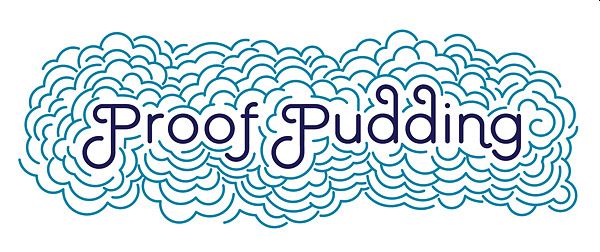Mind Your Language
Bruce Davis-Goff - APAC Operations Director
23 Feb 2021
Language is a surprisingly powerful factor when it comes to creating influence, how your communications are structured can have a huge impact on your ability to shape a customer journey.
Consider the following phrases:
- Buy now
- Learn more
Buy now is a pressured statement, it implies that clicking this link will possibly oblige you to get part way to completing a purchase, you may not be ready.
Learn more, on the other hand, appeals to natural curiosity and is enticing to a visitor, implying that by clicking on this link, your knowledge on this topic will be expanded. Now each has their place, if you’ve navigated to the product page and done your due diligence already, Buy Now Makes sense, Learn More is just confusing in this context.
Consider two more:
- Request a Demo
- Watch a Demo Now
Request a Demo makes me think I have to ask for permission, Watch a Demo Now is clearly all mine, there for the taking.
Part of The Process
The stages of the buyer decision process were first introduced by John Dewey in 1910:
- Problem/Need Recognition – Recognizing the problem and finding what products would solve it. i.e., my chair is uncomfortable.
- Information Search - Lets check out all the chairs I could buy, which ones are comfortable.
- Evaluation of Alternatives – Right then, found the 10 best chairs, lets drill down and weigh up their pros and cons
- Purchase Decision - Right then, pretty sure this is the chair for me but I’m going to Google / Tweet / Facebook about it, ask my mates, lurk in a forum or two. Yeah, Nah this is the one.
- Post Purchase Behavior - Dammit! It’s on sale $100 less than I paid, this is called “post purchase dissonance”.
“Addressing post-purchase dissonance spreads the good word for the product and increases the chance of frequent repurchase” – source https://en.wikipedia.org/wiki/Buyer_decision_process
Where does your site get in on the action? well assuming you have global brand recognition you may well enter the customer's mindset at number 1 above, i.e. I need an iPhone. More realistically you’ll be turning up at 2 or 3 or even 4. It’s in these 3 steps of the process that you can influence with language.
Words Can Change Your Brain
Why yes, they can, at least according to Andrew Newberg, M.D. and Mark Robert Waldman in the book called …. Words Can Change Your Brain https://www.amazon.com/Words-Can-Change-Your-Brain/dp/B00D9T9ULY
In the book the authors argue that human brains are hard-wired to worry, our crocodile brain always protecting us from threat. “A single negative word can increase activity in our amygdala”, they state.
The amygdala is two clusters shaped like almonds deep in the middle brain that have been shown to perform a primary role in the processing of memory, decision-making, and emotional responses (including fear, anxiety, and aggression).

This single negative word can release stress-producing hormones and neurotransmitters, interrupting brain function, especially regarding logic, reason, and language.
“Angry words send alarm messages through the brain, and they partially shut down the logic-and-reasoning centers located in the frontal lobes” they write.
“By holding a positive and optimistic [word] in your mind, you stimulate frontal lobe activity. This area includes specific language centers that connect directly to the motor cortex responsible for moving you into action. And as our research has shown, the longer you concentrate on positive words, the more you begin to affect other areas of the brain”
So, in short, unless you intend to wind your customers up (attention bad UX practitioners!), it makes a lot of sense to choose your words carefully.
Putting it into Practice
So, considering your window of influence is quite small (they only found out your product or service at step 3), your website itself may only have a few opportunities to influence with language, it means those Calls to Action (CTA) take on significant value.
And this is exactly why these CTAs need to be testable. Language is subjective based on culture, age, personal tastes, politics, and many other variants. To find out what works best over all requires a steady program of research and refinement; when a 2% increase in sales can worth a lot of money, it makes financial sense to get that language razor sharp and laser targeted.
And that CTA that got clicked on is just the start, the product page, the checkout process, the confirmation email, the follow up email, the newsletter they agreed to when they purchased, your FAQs, Contact Us pages - all should be viewed through the lens of a language-based engagement. A crafted user journey should have consistent messaging that reassures the user and consolidates the main story you wish to tell.
Whooah you say, that’s a sizable chuck of work – the answer is, start small with the high visibility, strategic CTAs that have the most exposure and potential for conversion. Pick one.
More Cheese Grommit?
Let’s pick a random website and see what we might do. I did a Google search for “cheese making kit” and went to visit https://www.madmillie.com/

Fairly standard looking site, lets start with the headline:
DIY Kits to craft your own food & drinks
Well call me picky, but that seems a little wordy and non-specific and doesn’t even mention cheese. Worse, the Explore Kits and Shop now don’t take me straight away to a page with a nice “on-special” cheese making kit. I must mooch around a bit to find them.
Remember every time a site slows me down in solving my problem, I start to develop “pre-purchase dissonance”, my crocodile brain starts yelling “it’s a trap!!! Run!!!!”
Still the big cheesy ball is attractive, and the Healthy Homemade stamp of approval tells a good story that appeals to my inner narrative about being healthy, so kudos there.
Also remember, that like most sites, this one has a single shot at grabbing my attention, so that banner must be compelling.
So, I’d make a few small changes and test them.
- I’d link the Explore Kits to a page with just that, Cheese Making Kits only, boom. After all, headline is all about kits, show me the kits. In essence the Explore Kits link is a lie, it doesn’t take me to any cheese making kits, a more honest link would be “Click here to meander in a puzzled fashion around our site until you chance on the thing you wanted”
- Exploring sounds like hard work, I’d test changing Explore Kits to View Kits or Compare Kits
- I’d try replacing the Shop Now with a Watch a Demo Now button to pop a modal video showing me how a cheese making kits is used as another way of creating engagement and a new journey path.
- I’d make and test these changes one at a time to see if they lifted conversions. I’d encourage you to run this exercise across multiple sites to get comfortable critiquing other approaches to the language of engagement, start with your competitors.

START NOW FOR FREE
Yes, after writing this I am thinking in short punchy phrases and OTT graphics like above. It is exciting to have the ability to test the behavioral impacts of language on a live audience and monitor the results. If you don’t have software like Sitecore with built in analytics and personalization, you can still try this for free using Google Optimize. You can then tie your tests into your Google Analytics. https://marketingplatform.google.com/about/optimize/ And the proof, as they say, is in the pudding…mmmm pudding.


Bruce Davis-Goff
As a five-time Sitecore MVP, with 15 years of experience working with, and for Sitecore, Bruce brings a valuable depth of skill and experience and a commitment to best practice excellence.
Bruce is a passionate Sitecore Architect with specialist skills in SXA, strategy, migration, and upgrades and is a certified developer, trainer, and NZ Sitecore User Group / SUGCON organizer. His background as a Sitecore Business Development Manager, coupled with solid technical skills, and enthusiasm for getting the most out of Sitecore, means
Bruce brings value to any project and currently looks after operations for the APAC region.



Share on social media